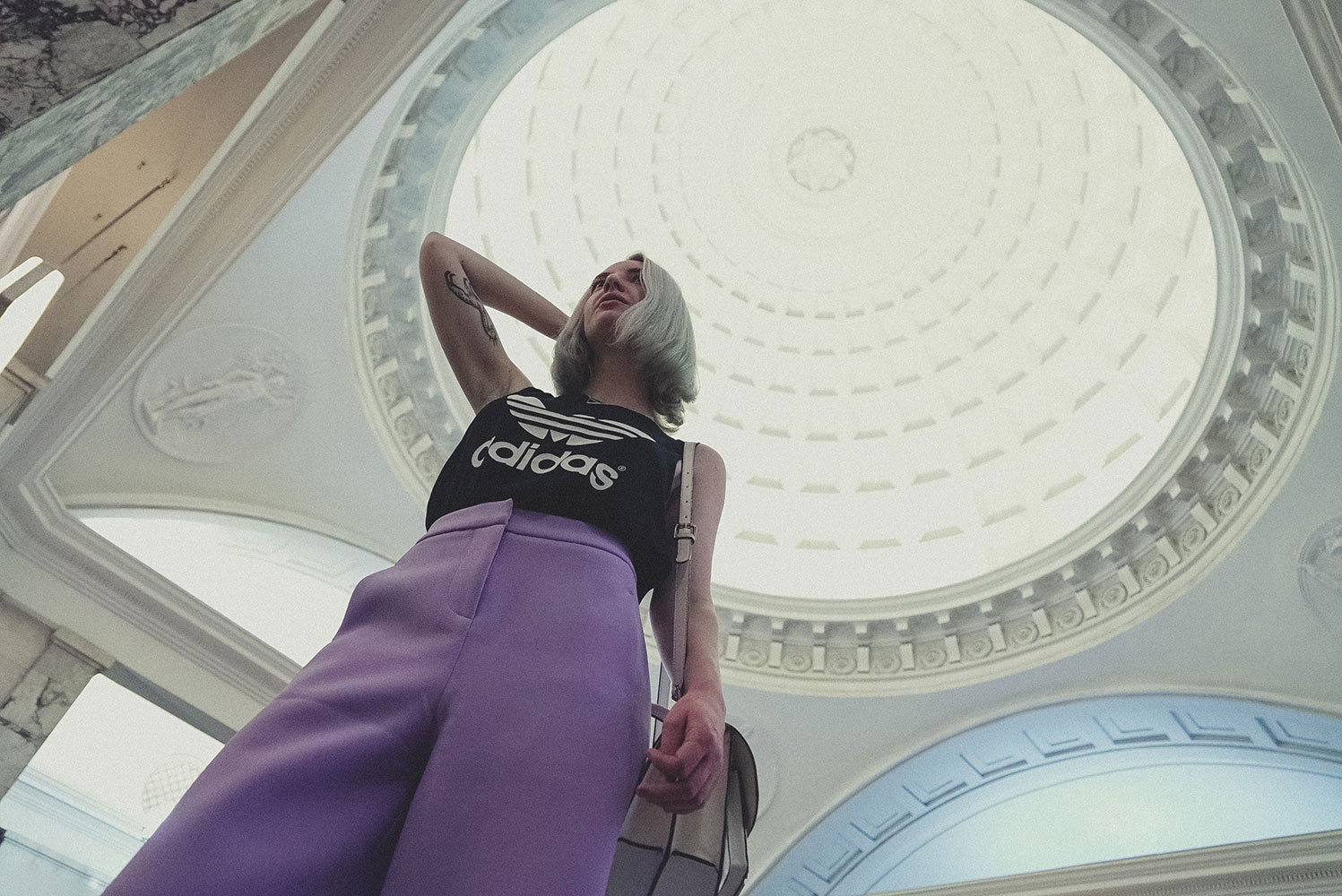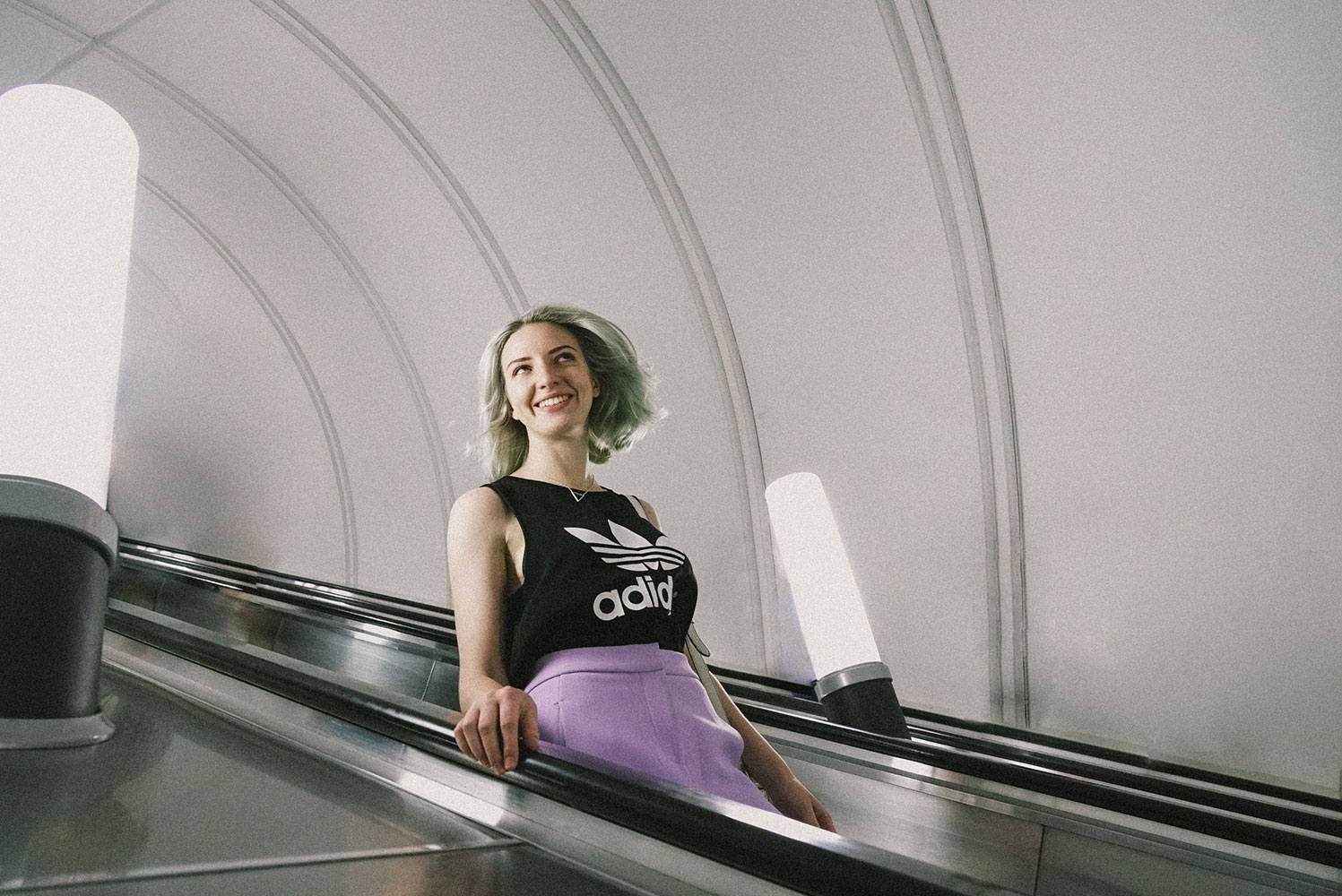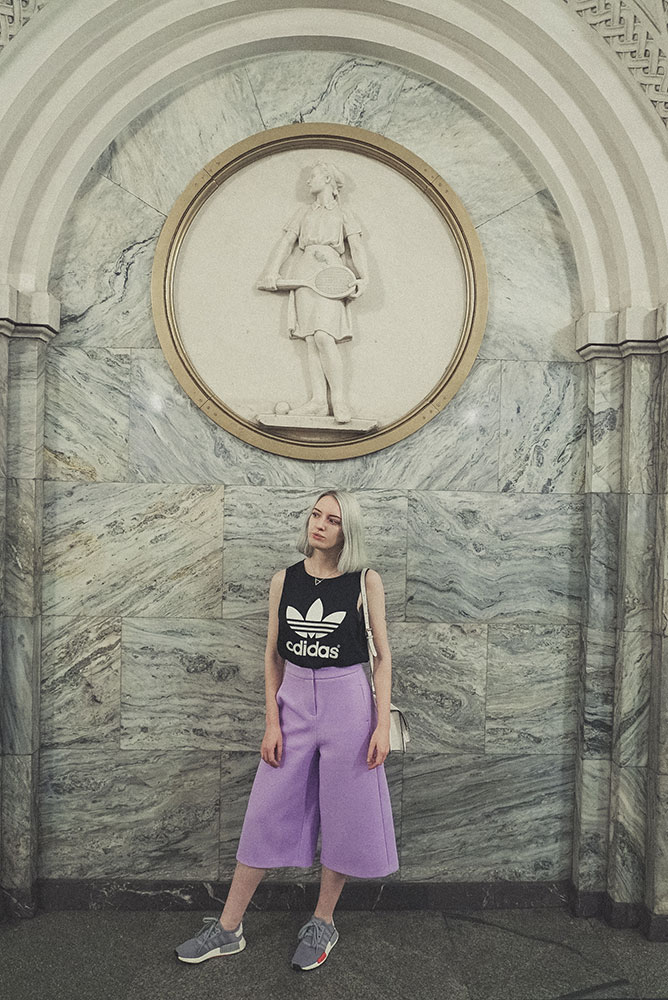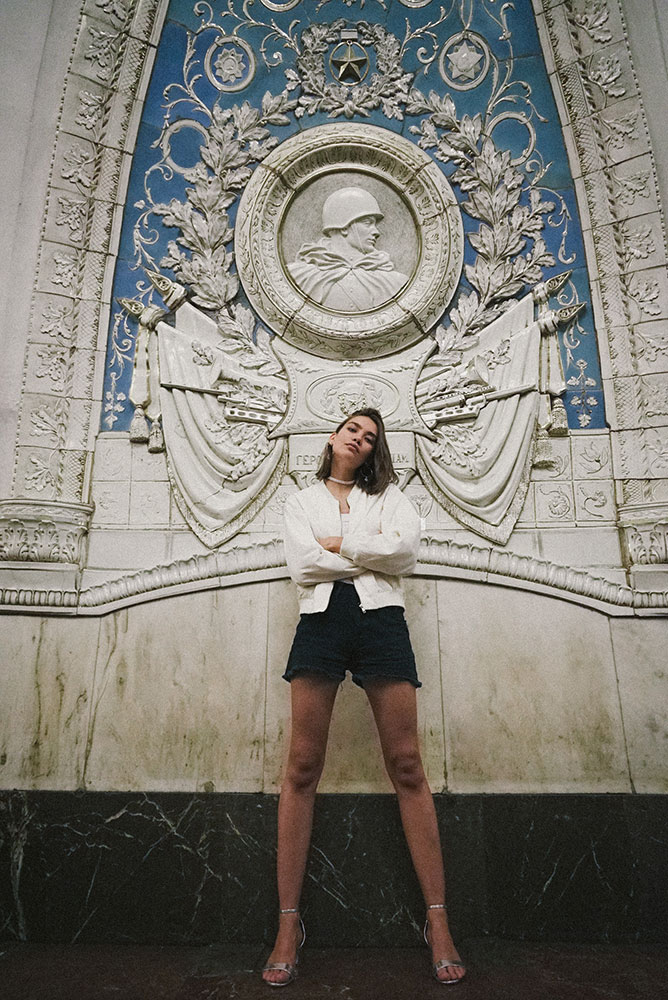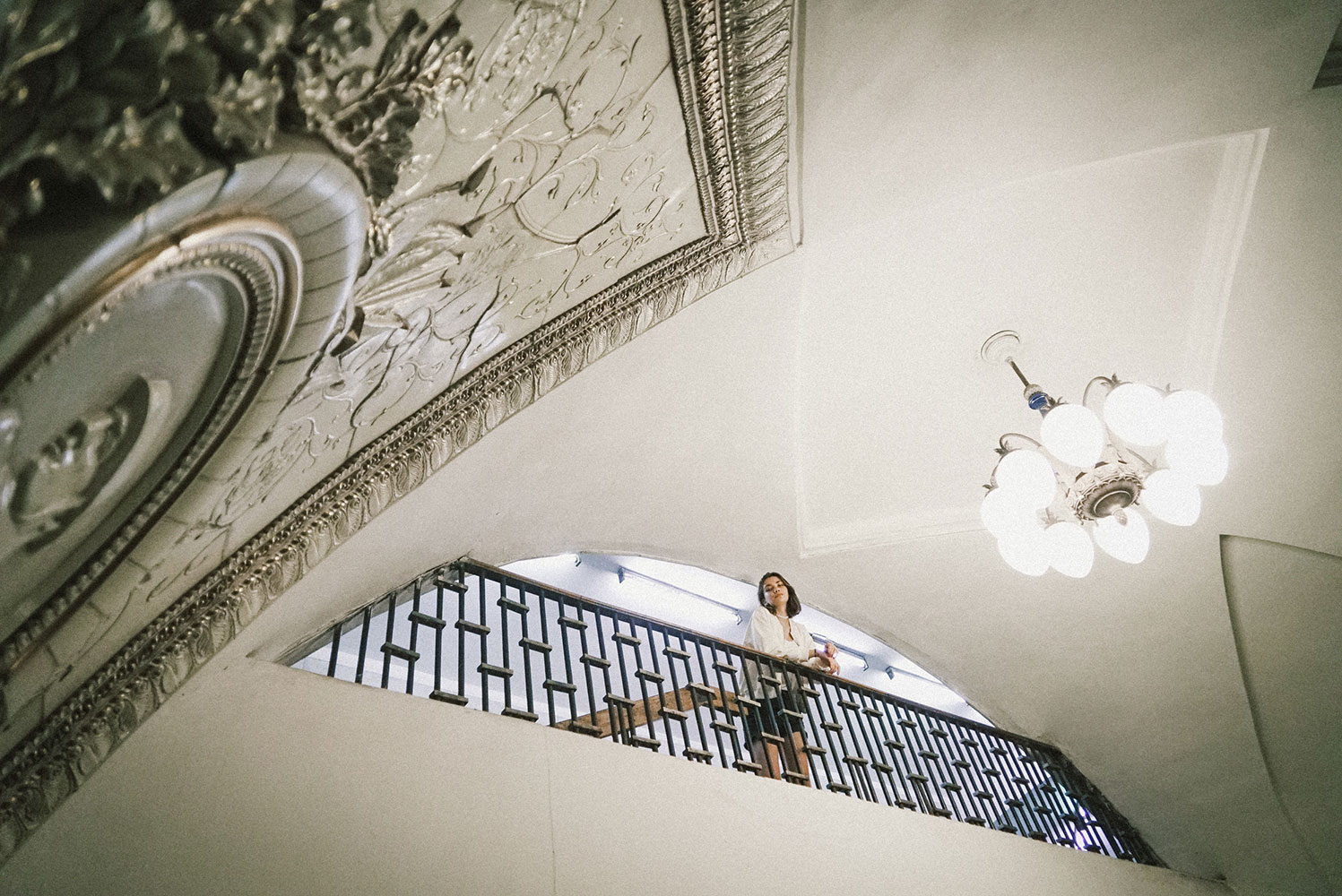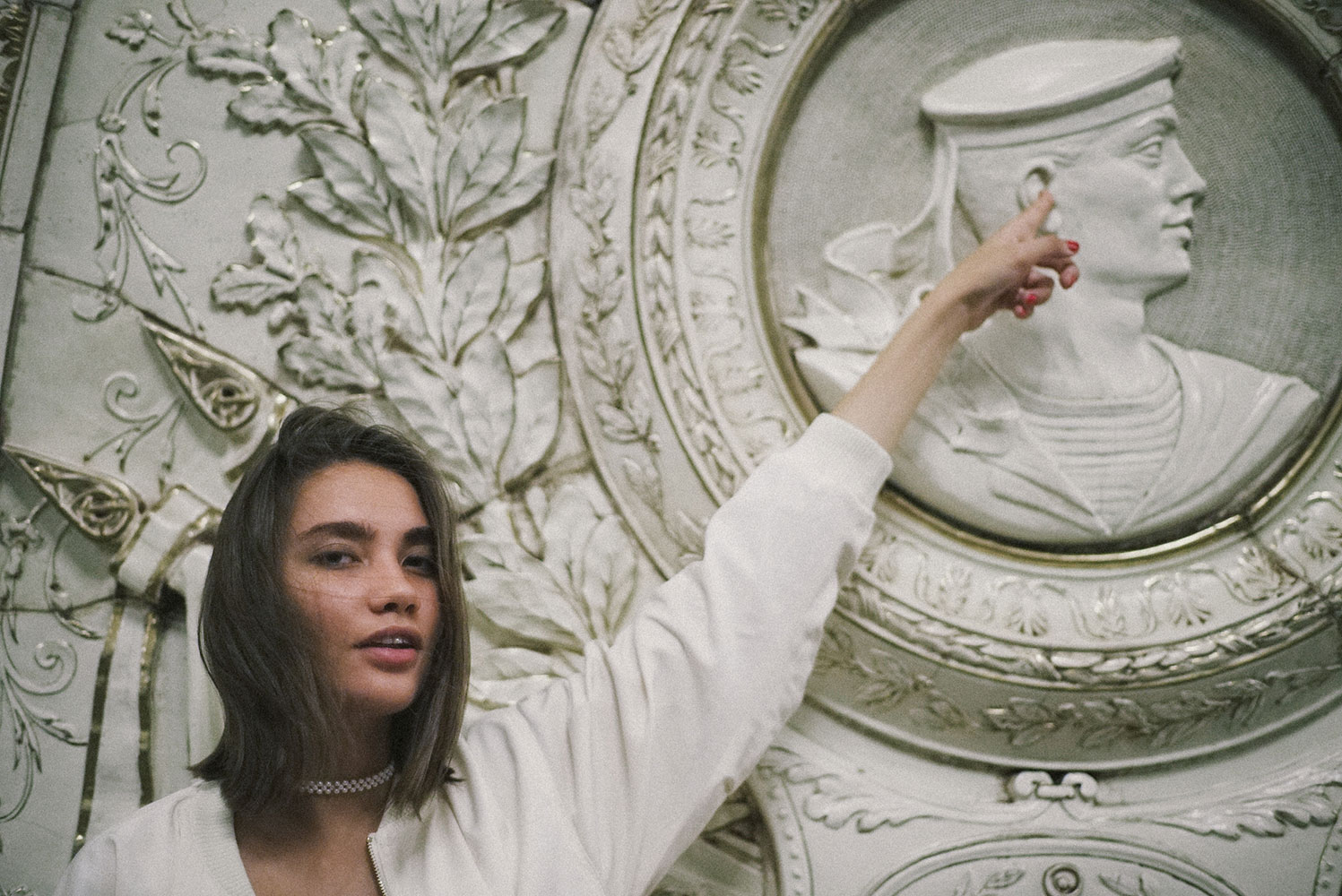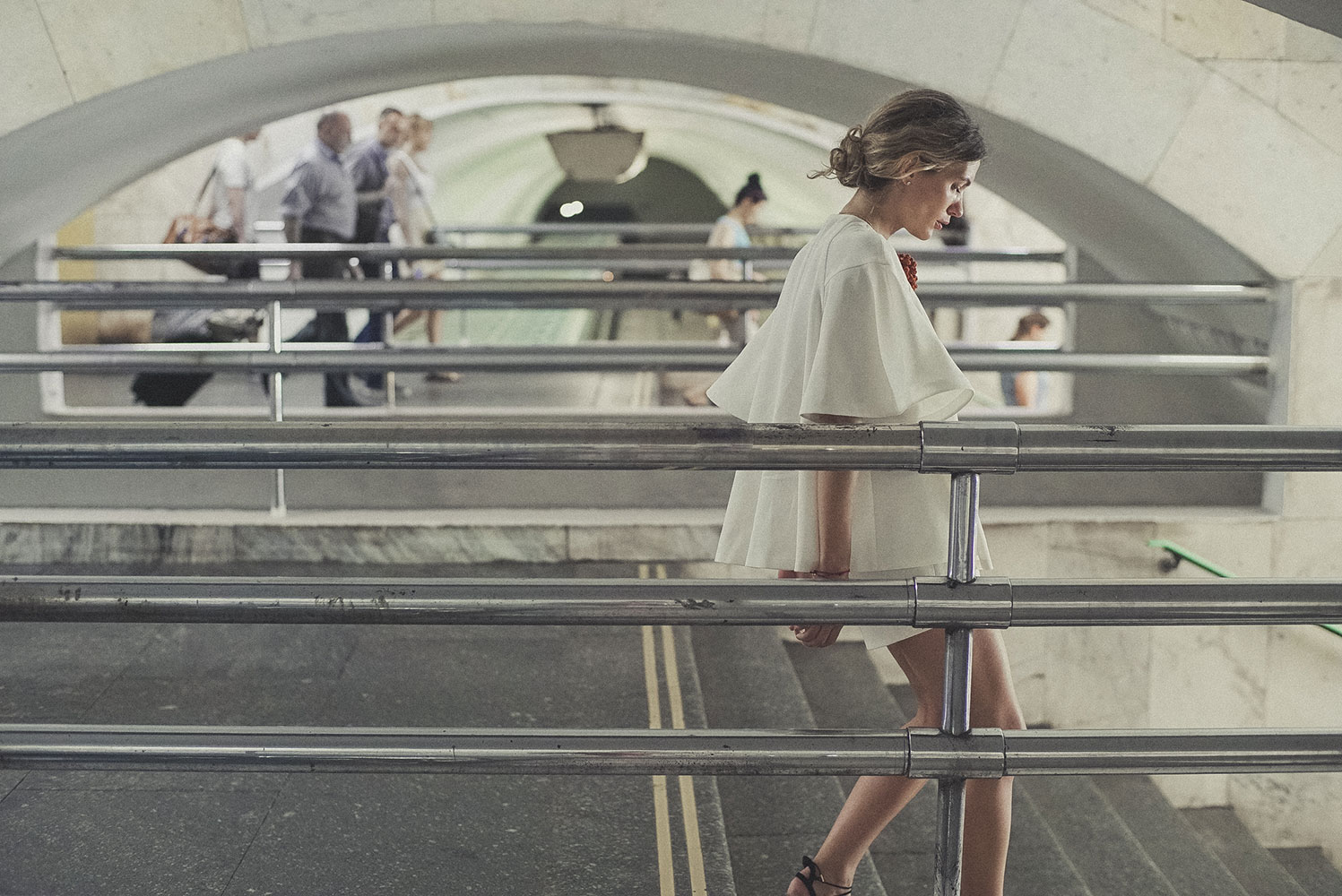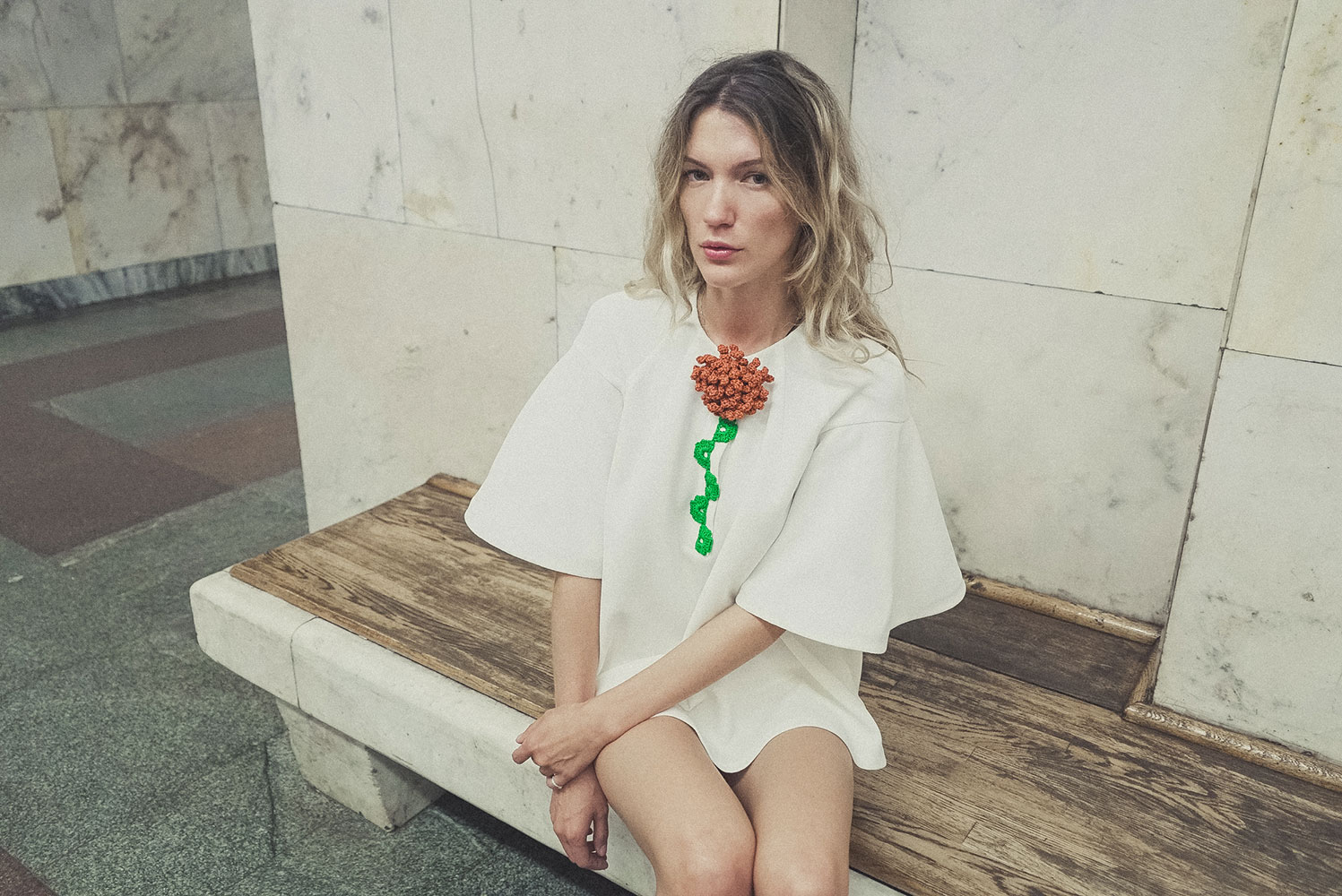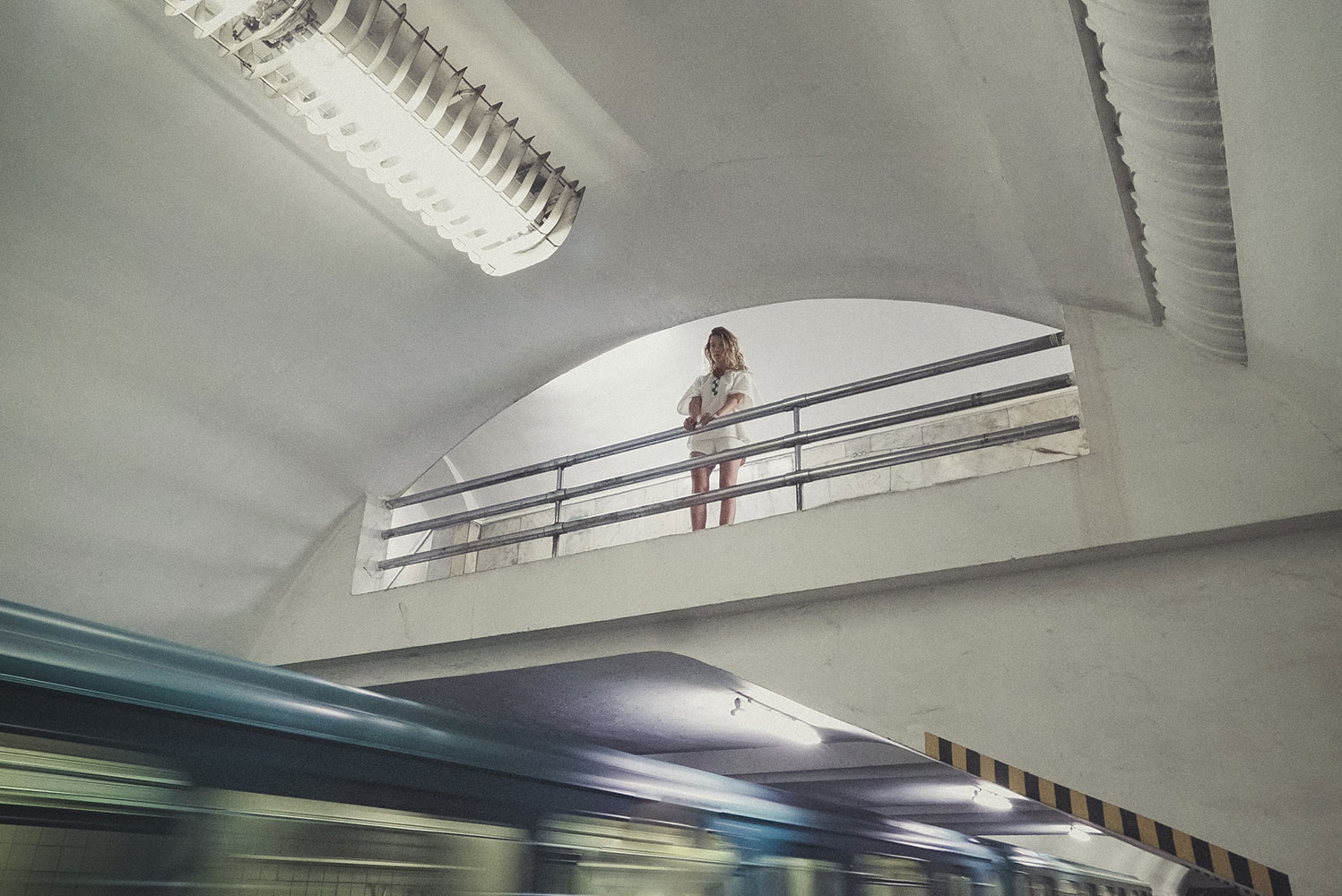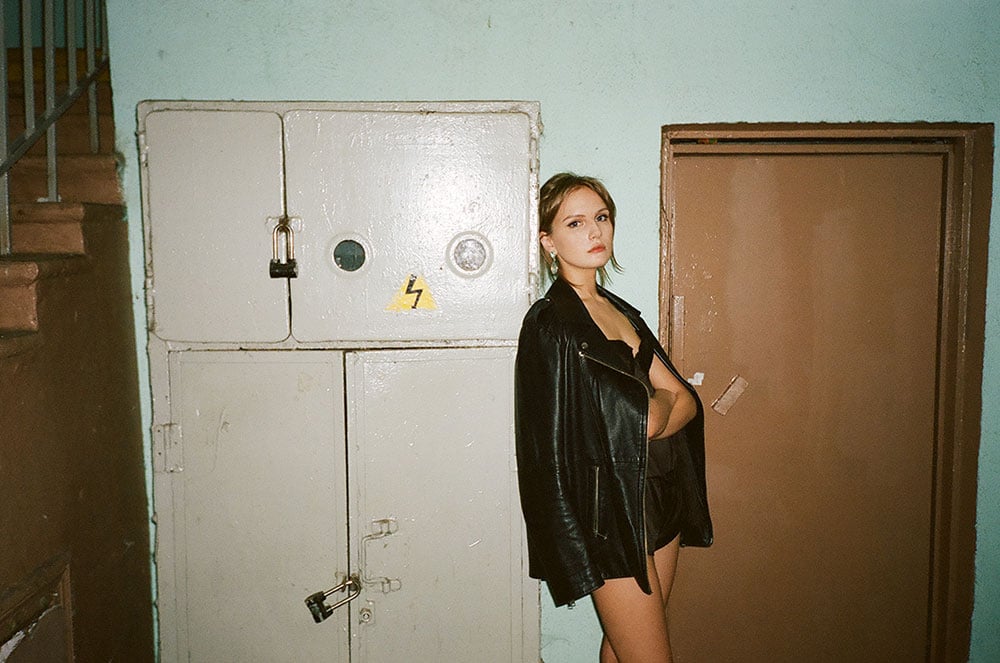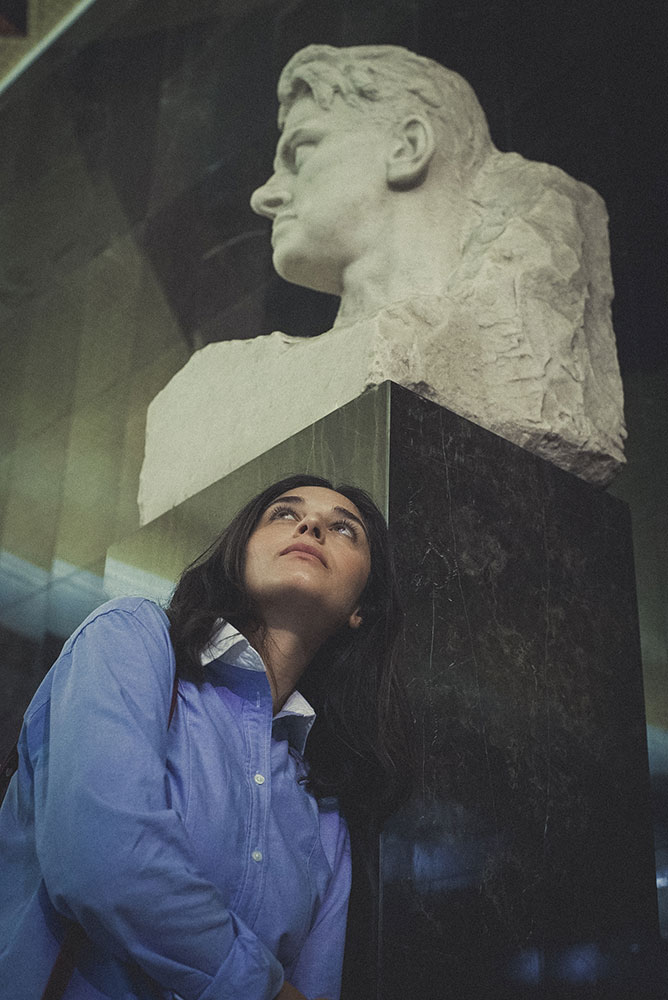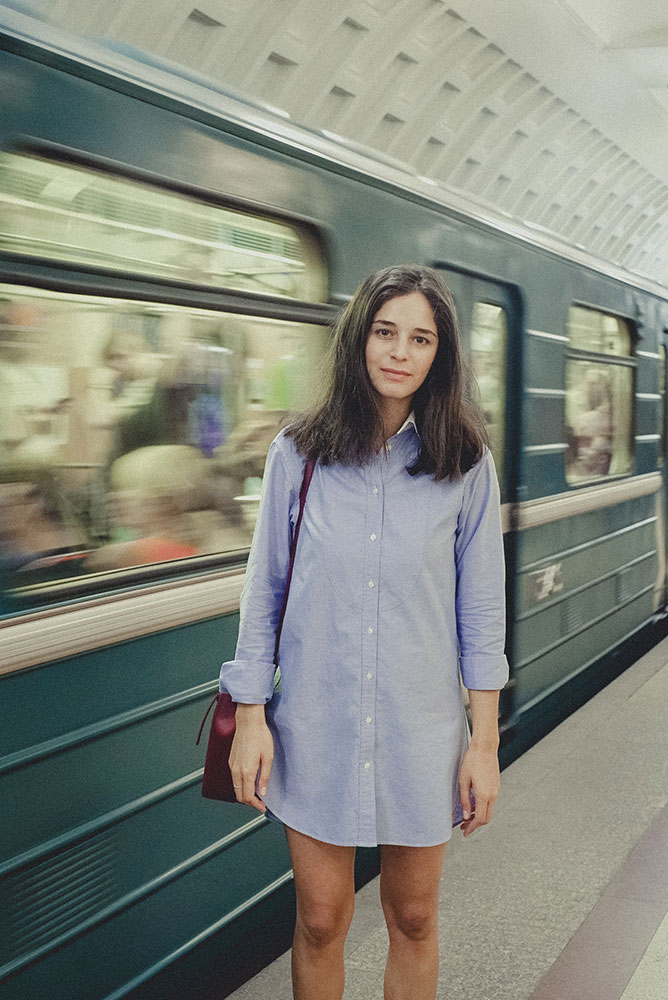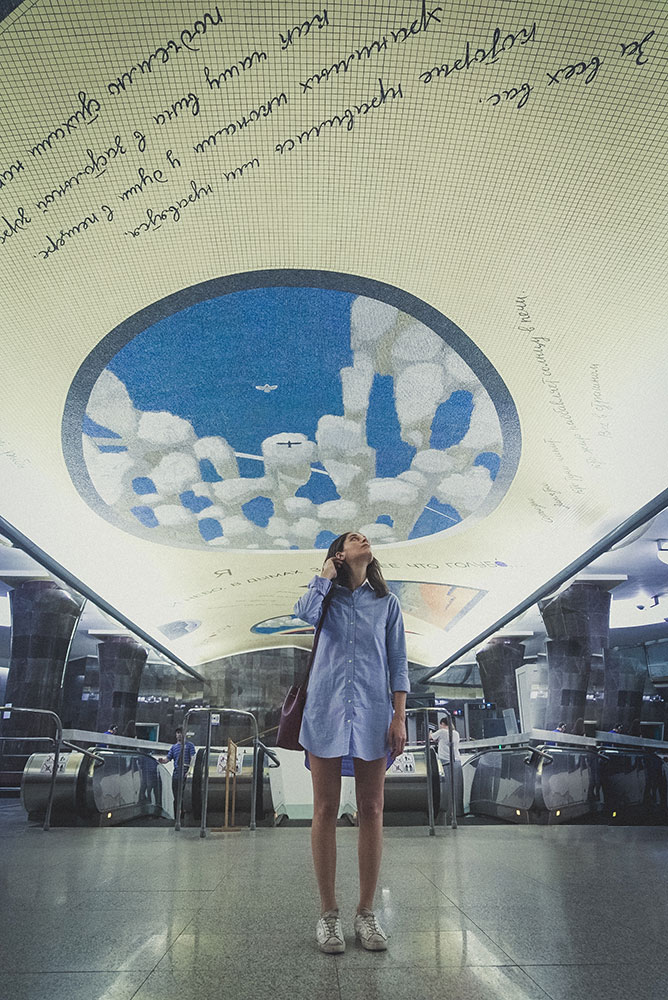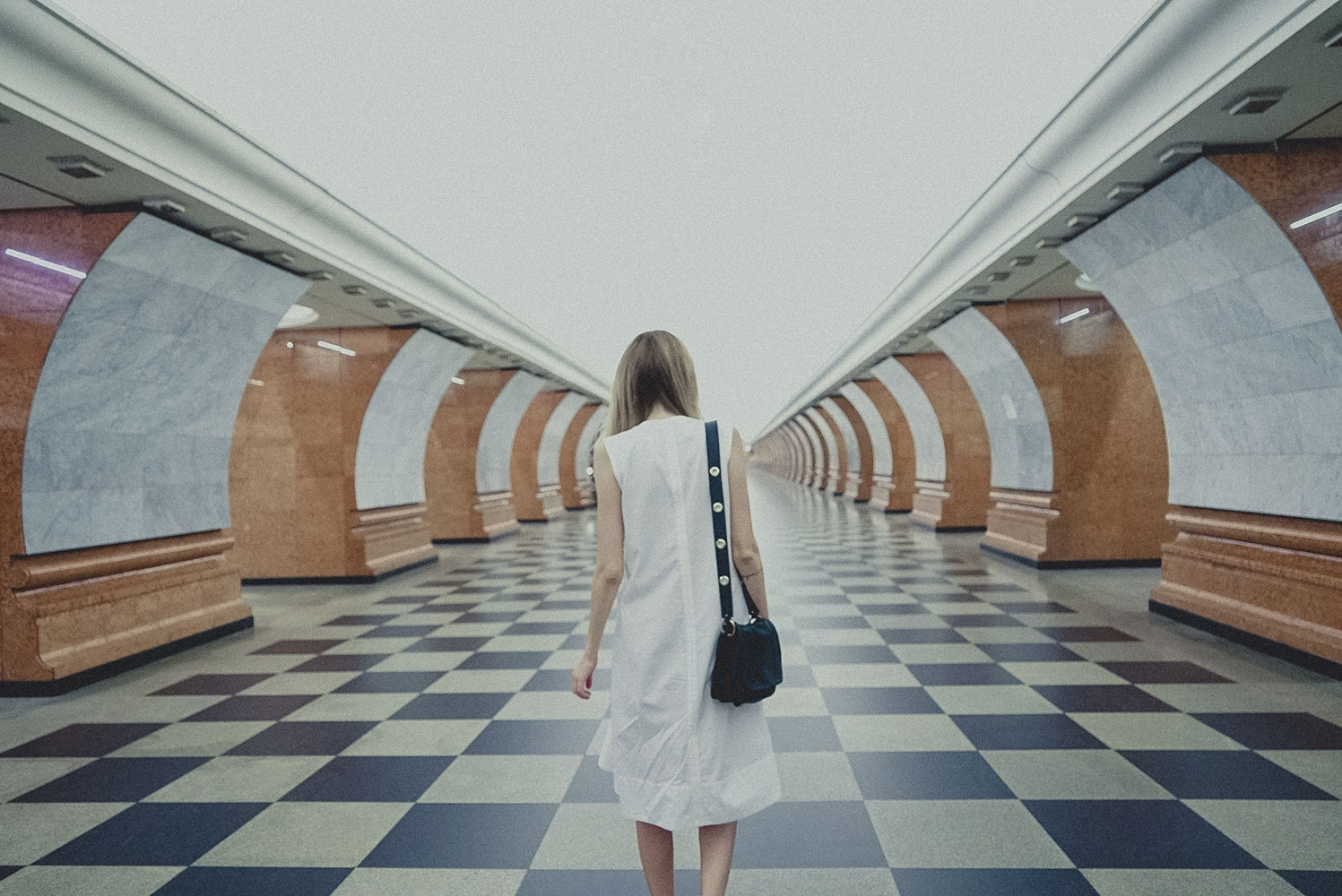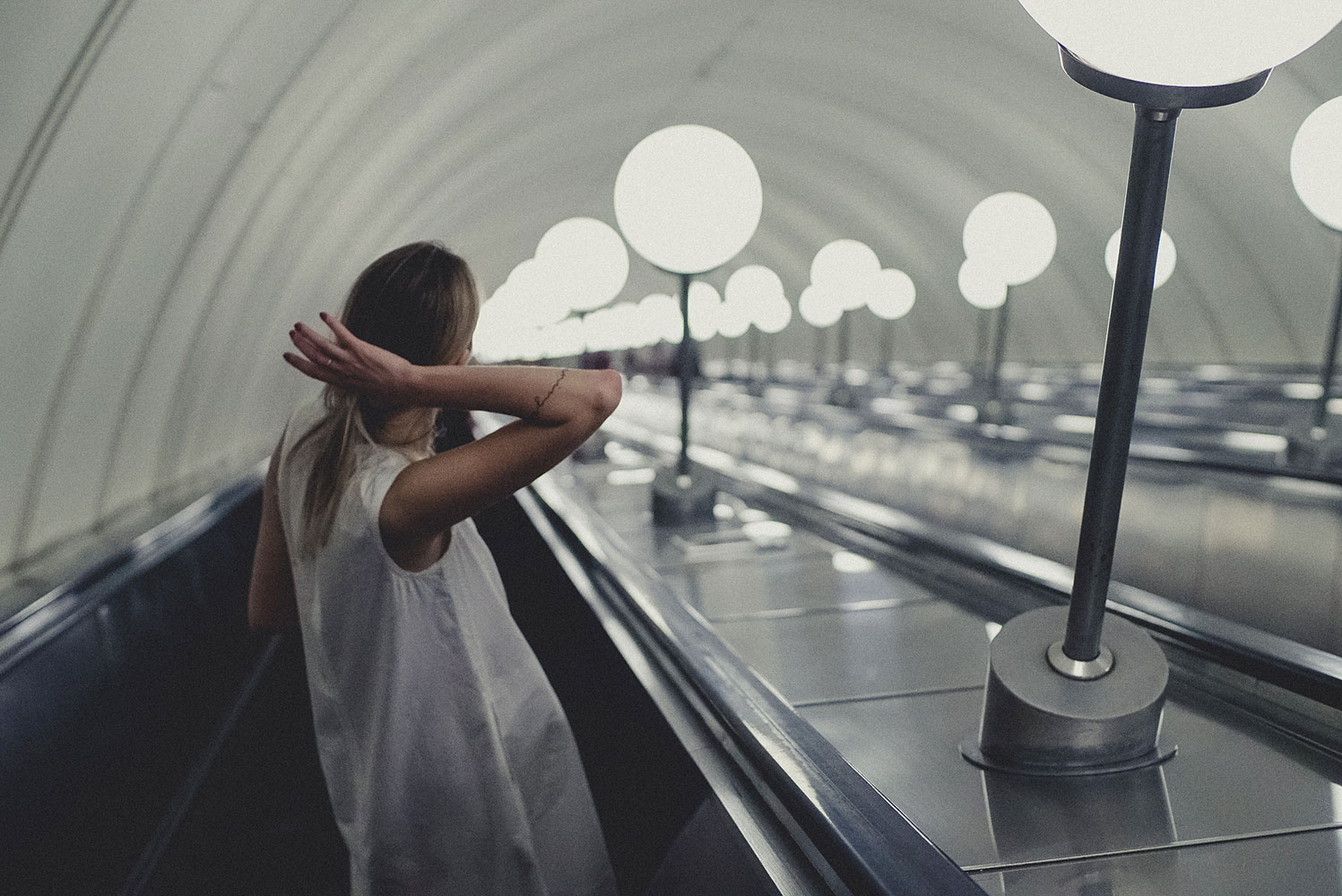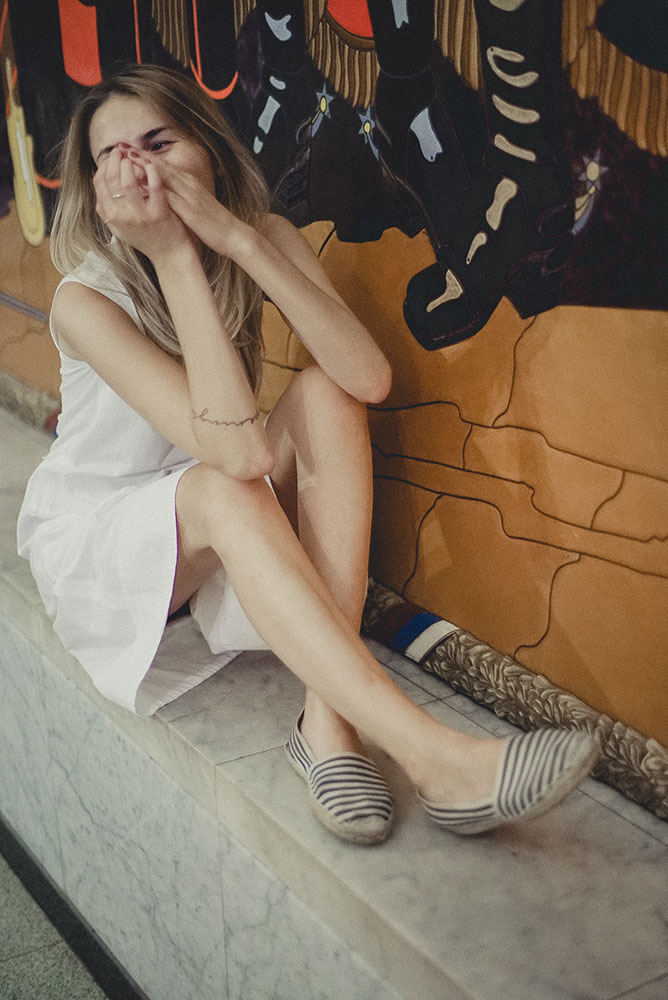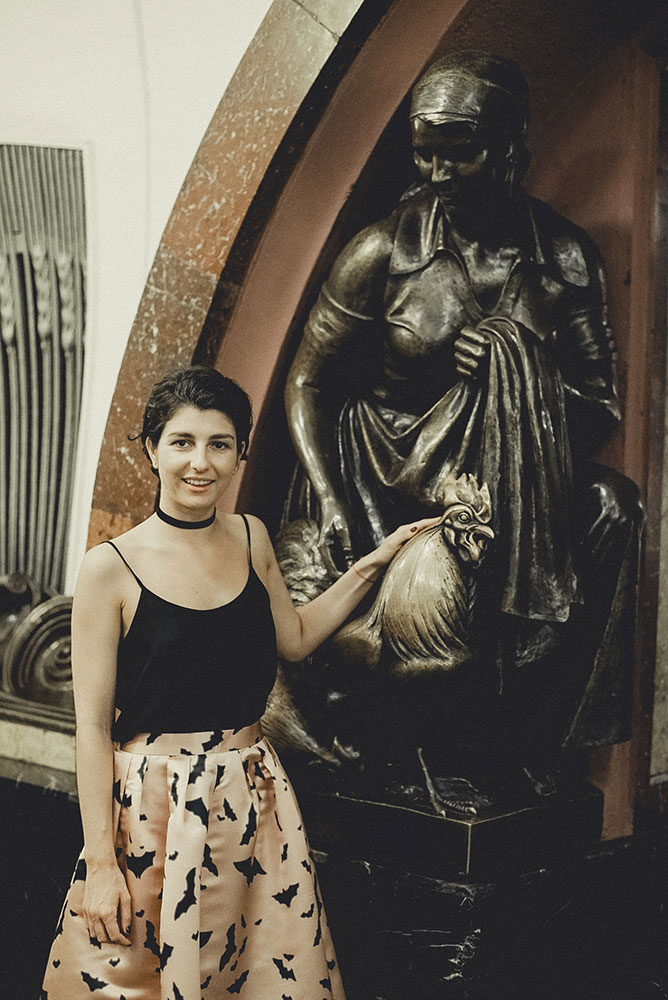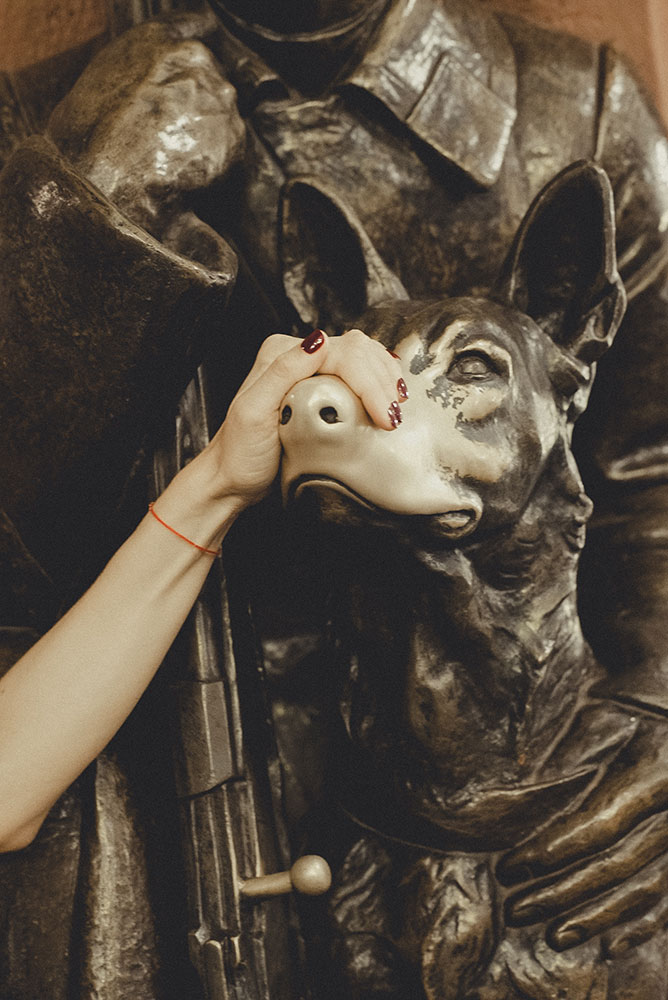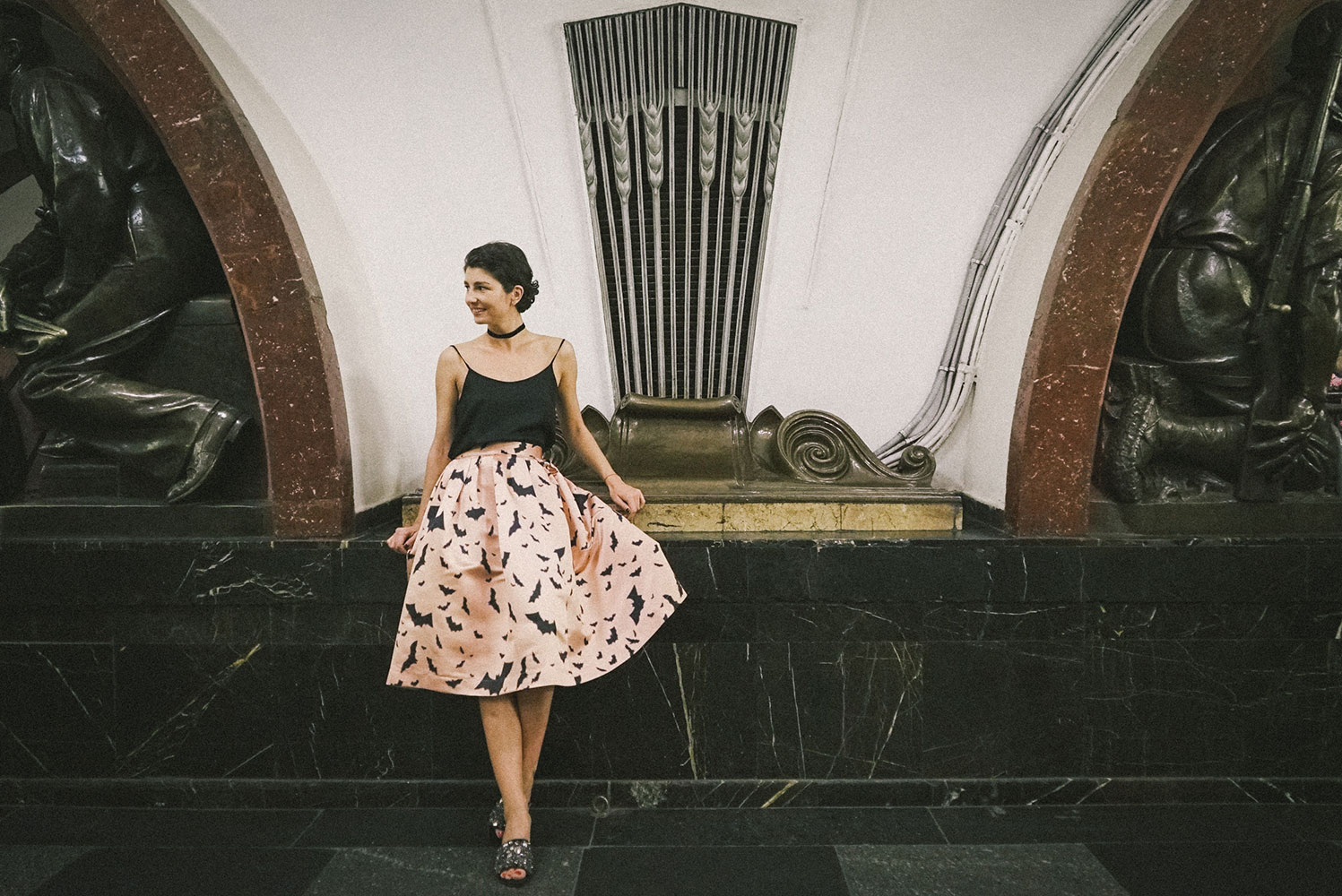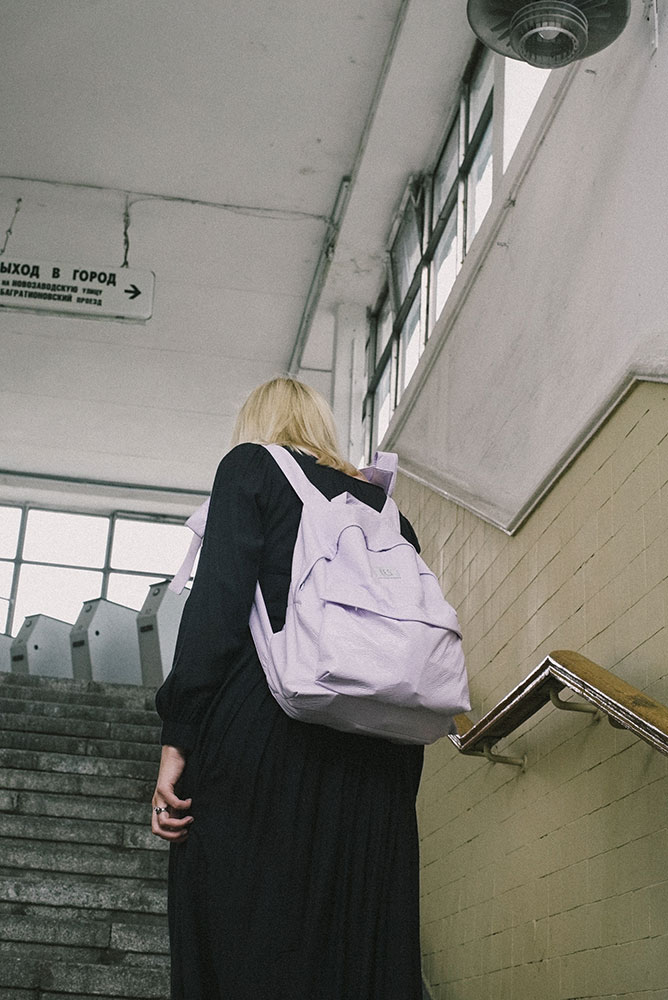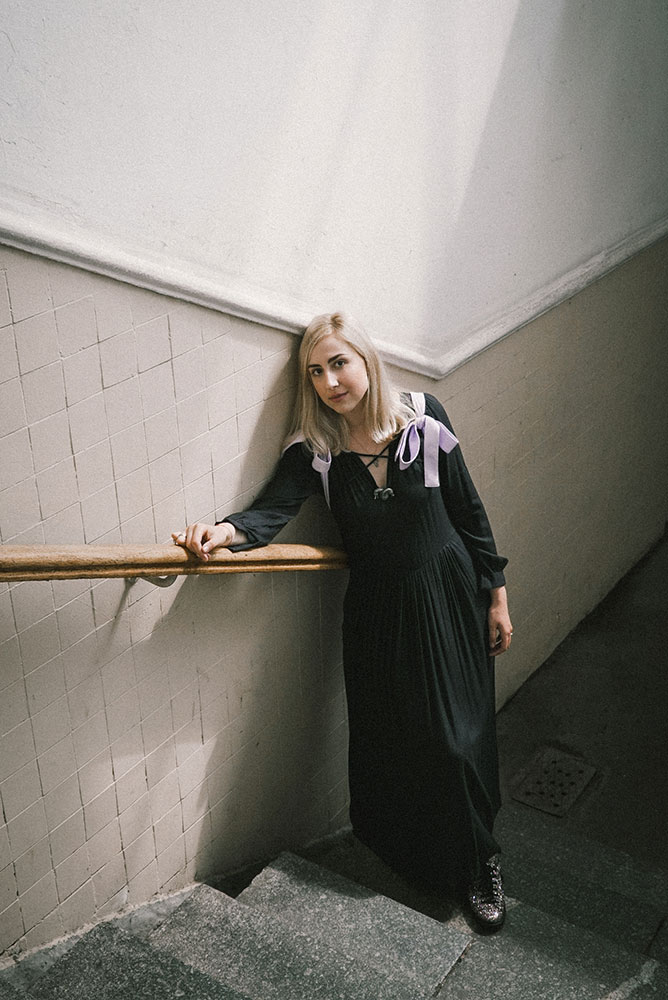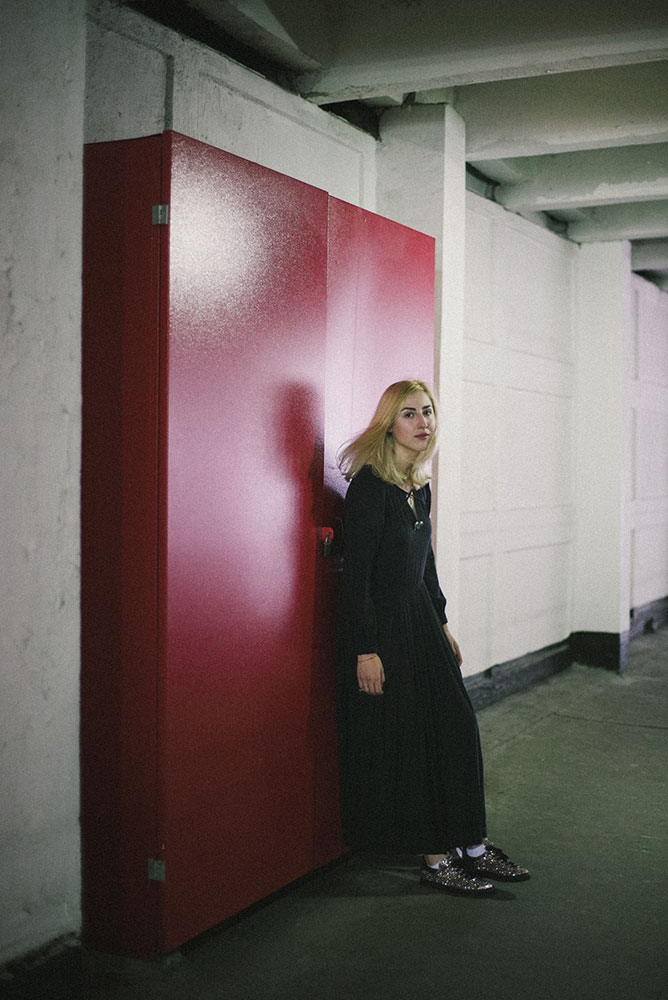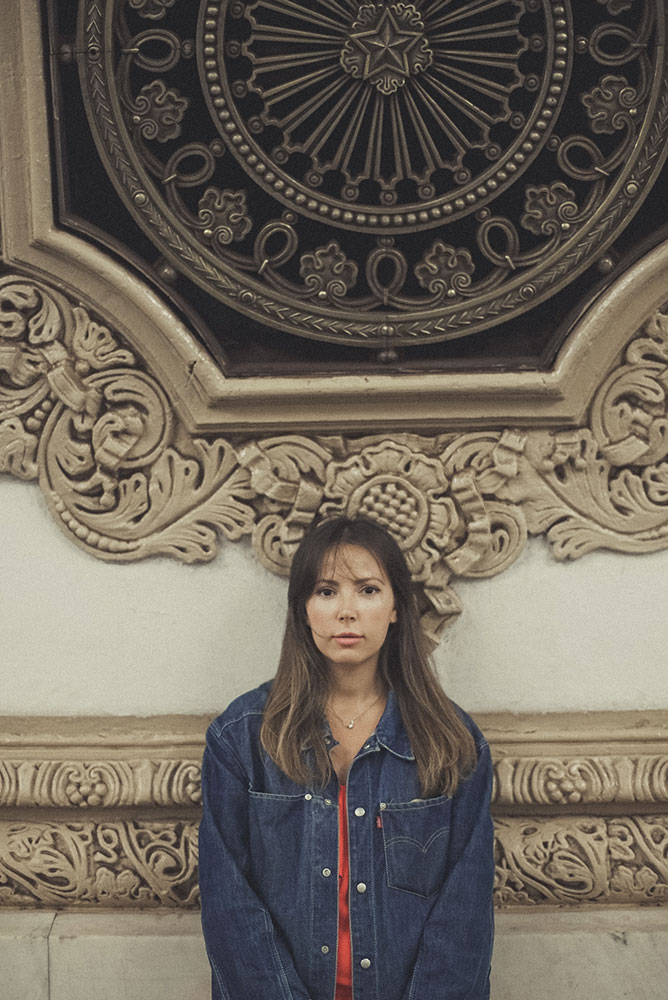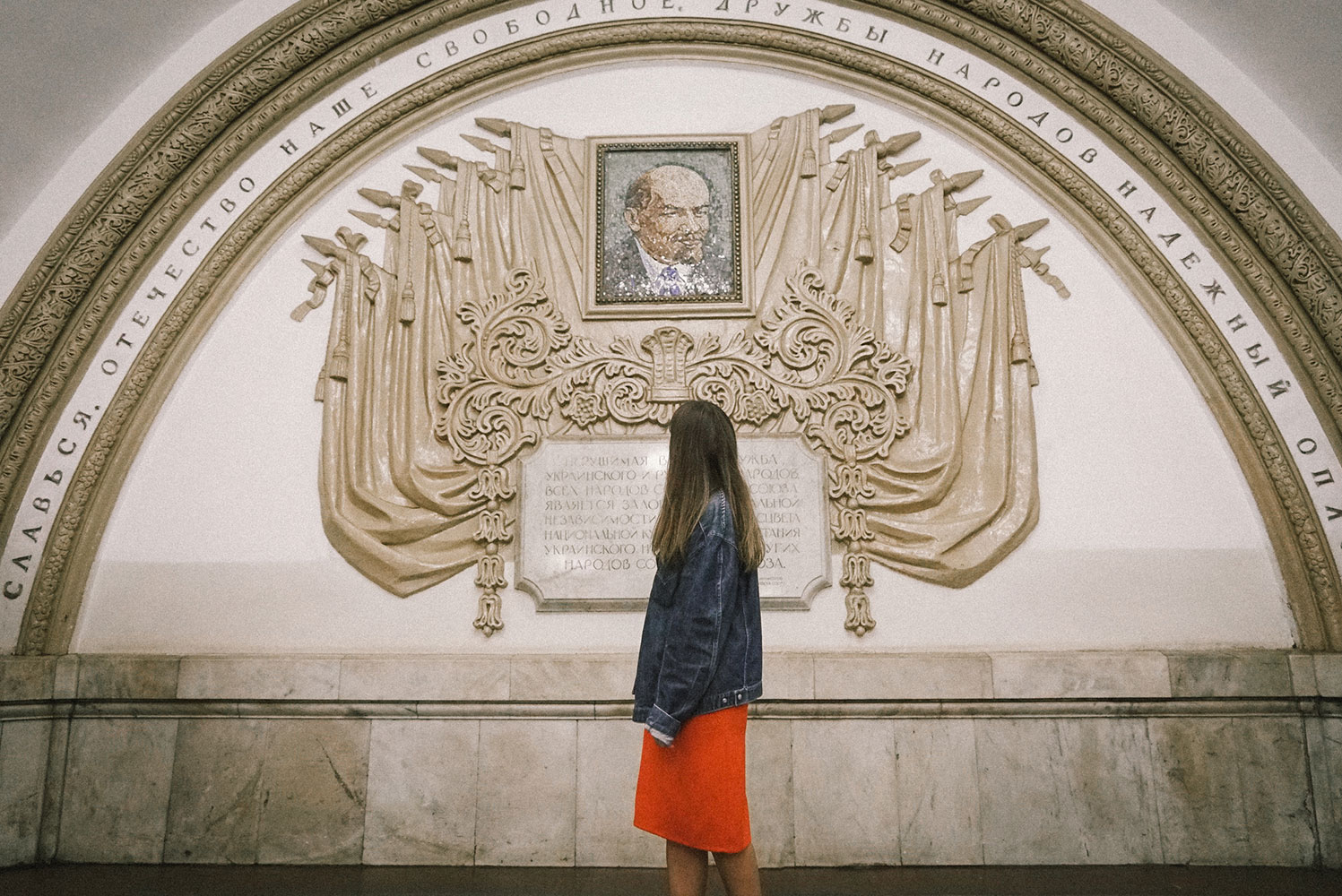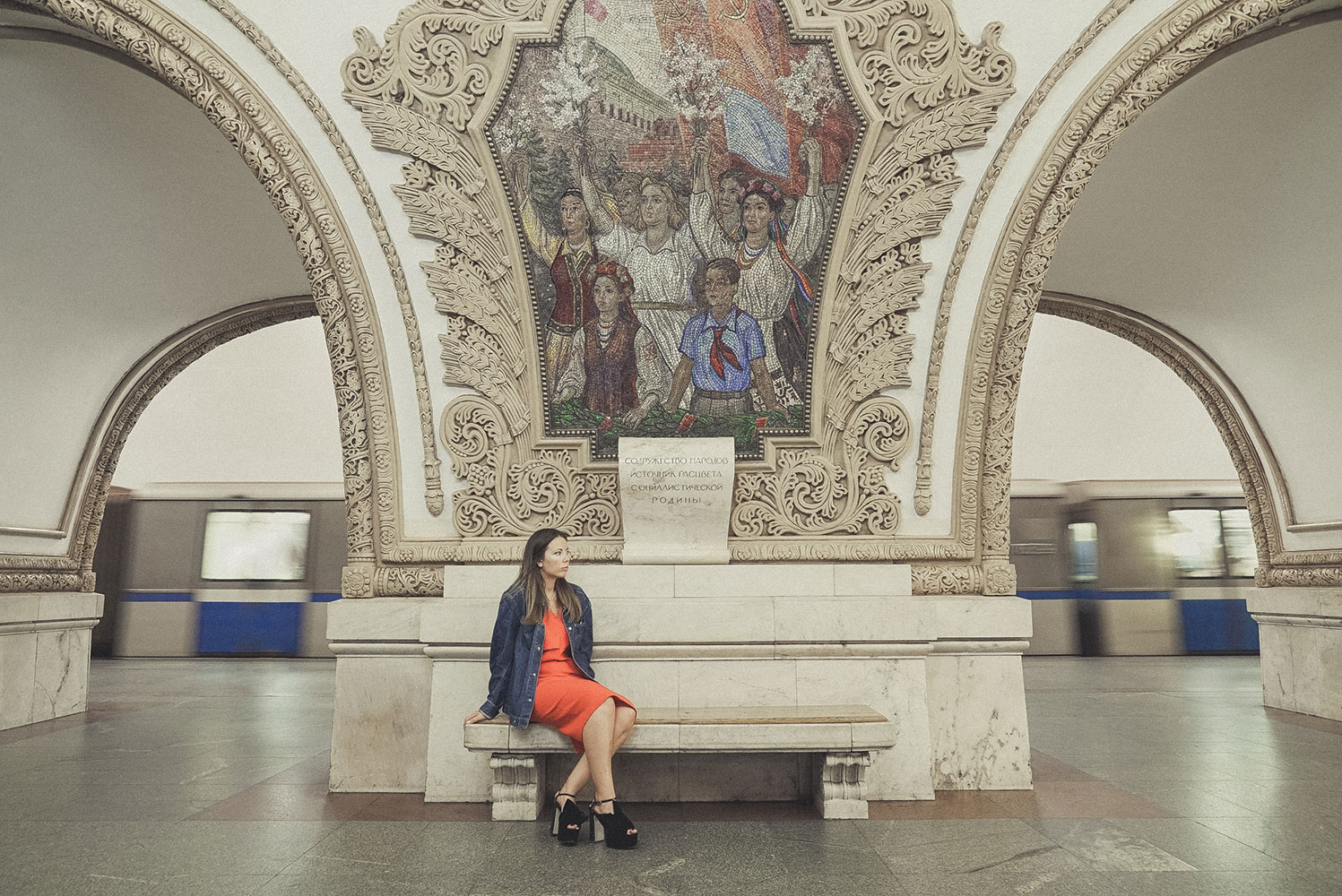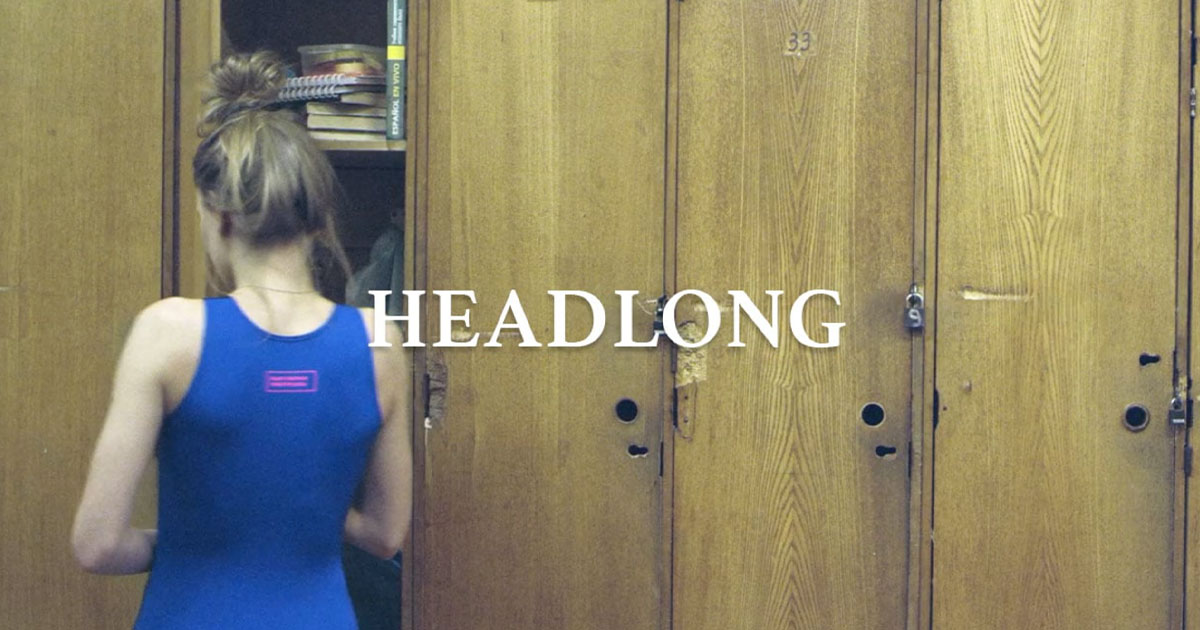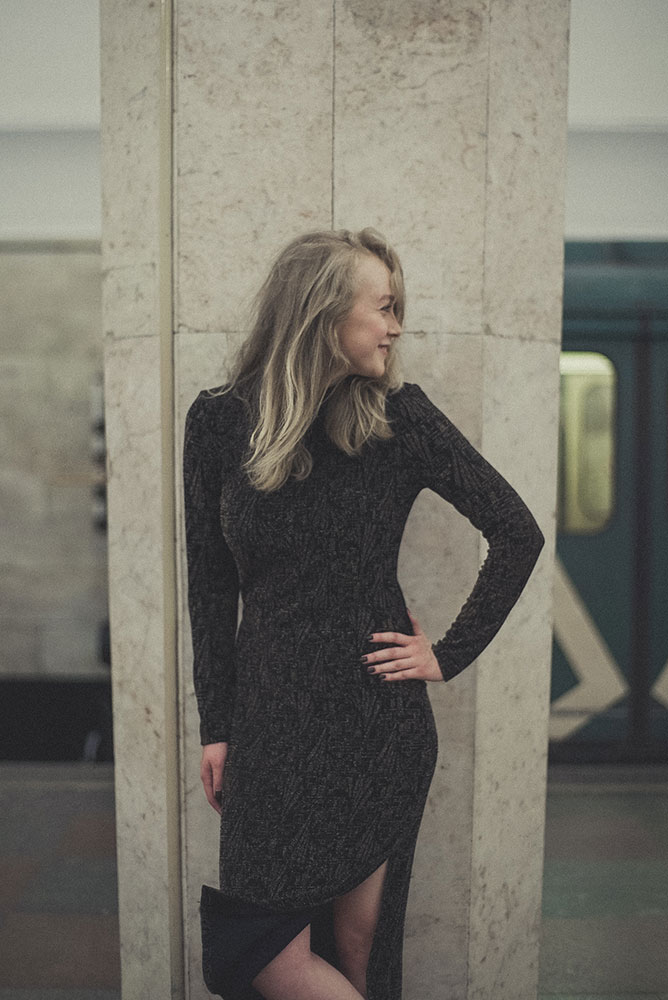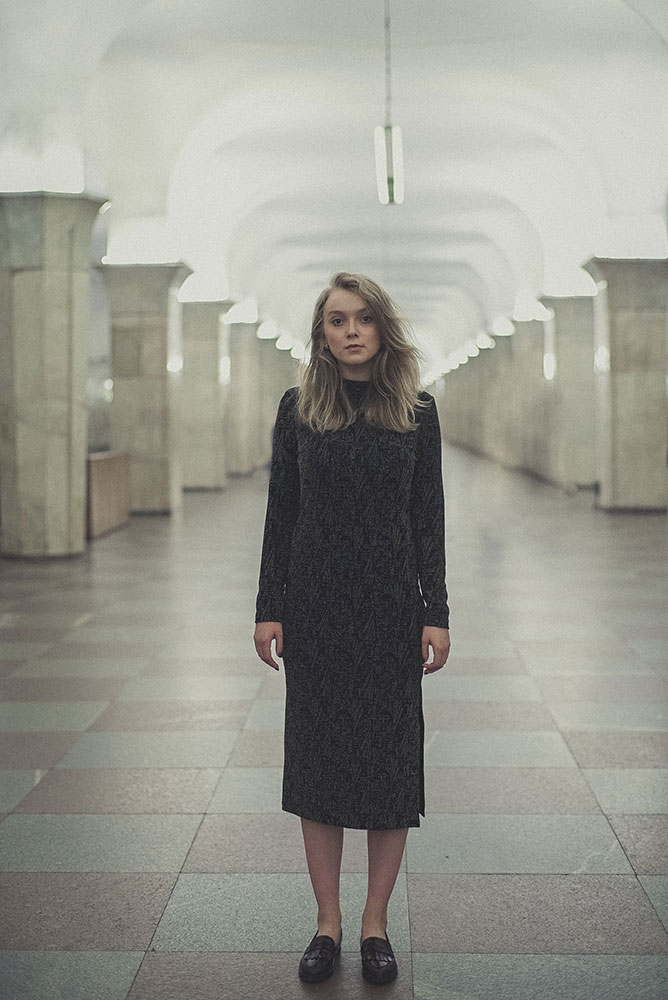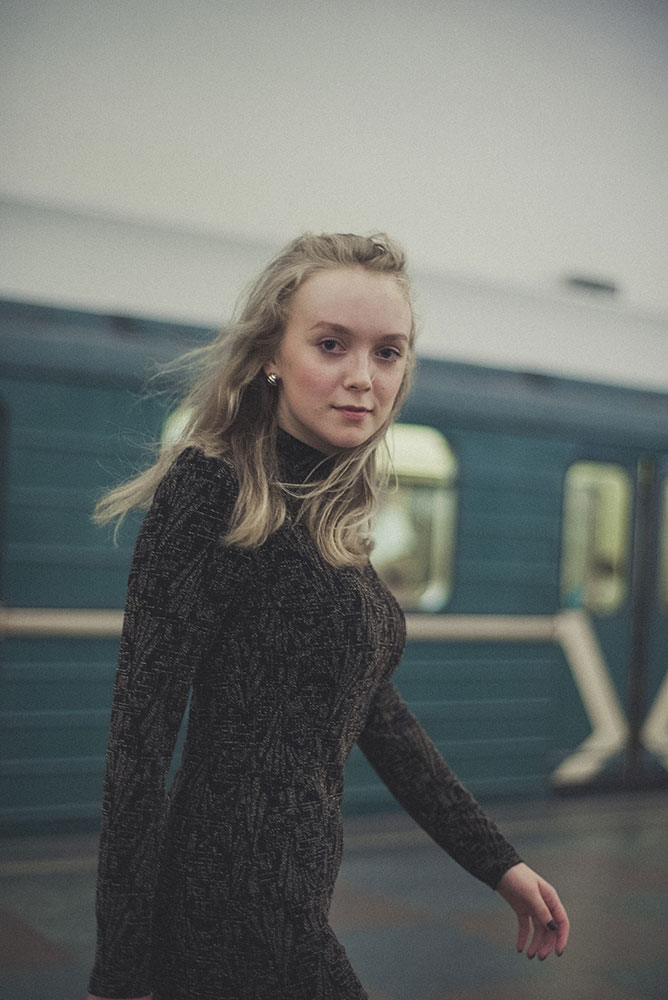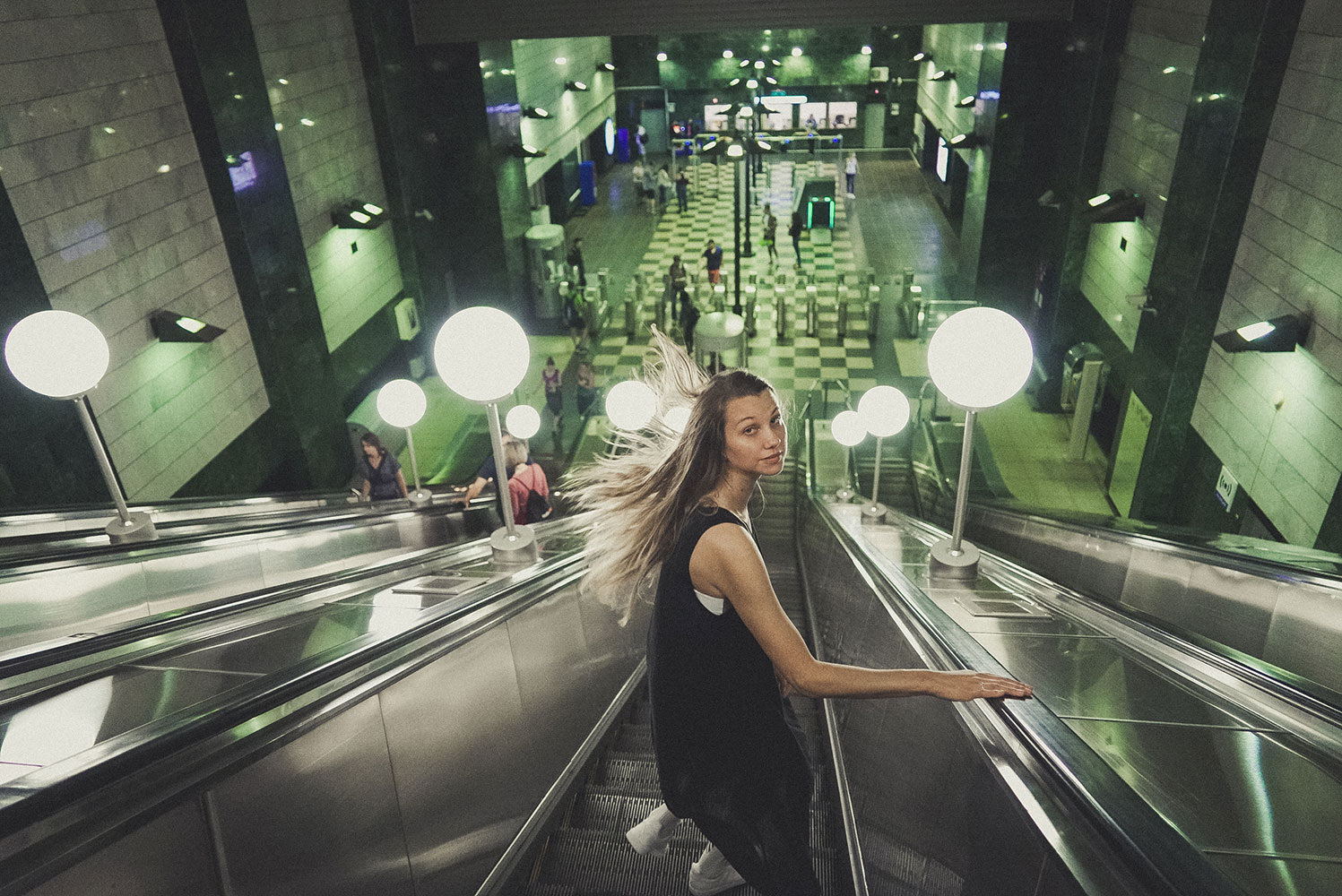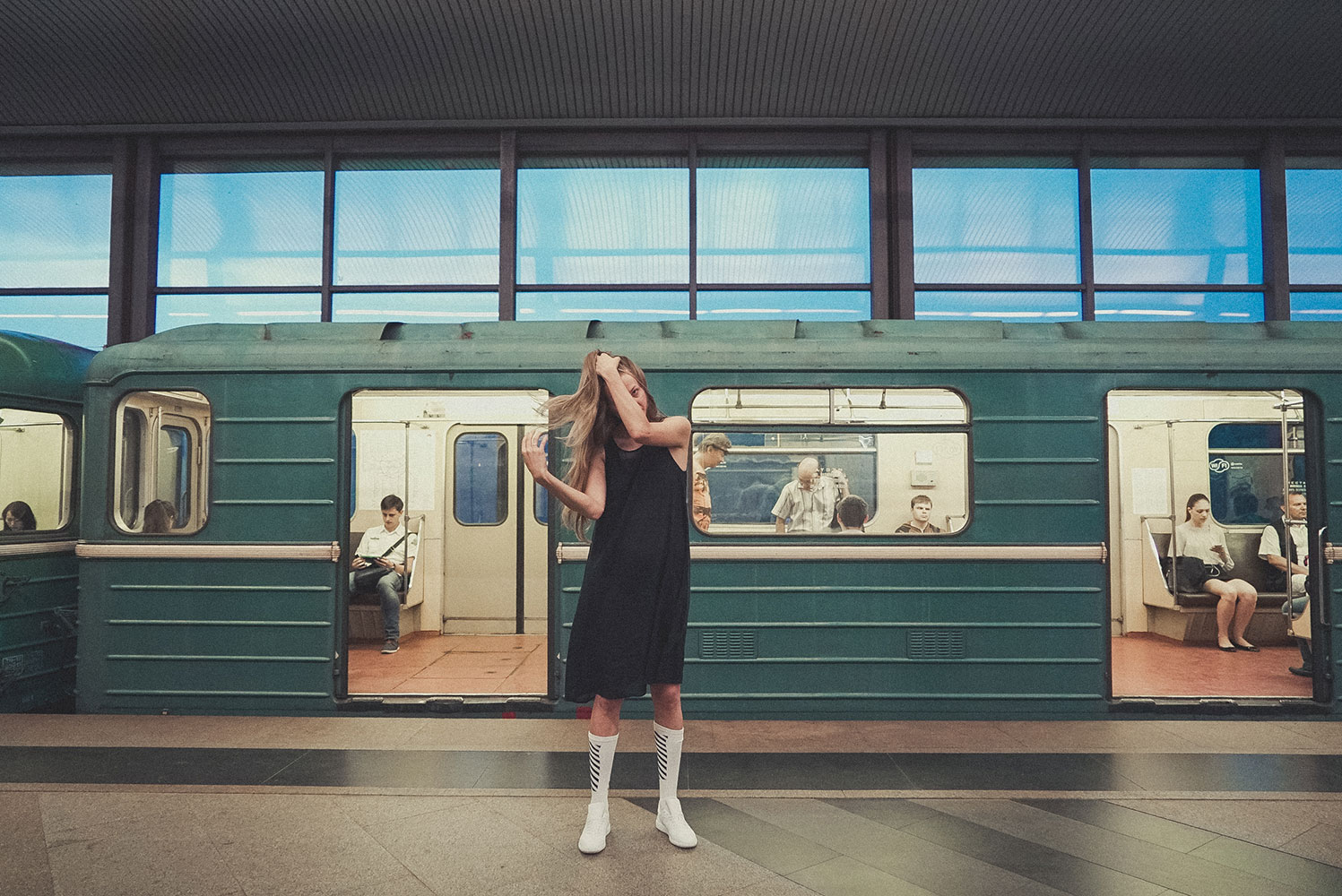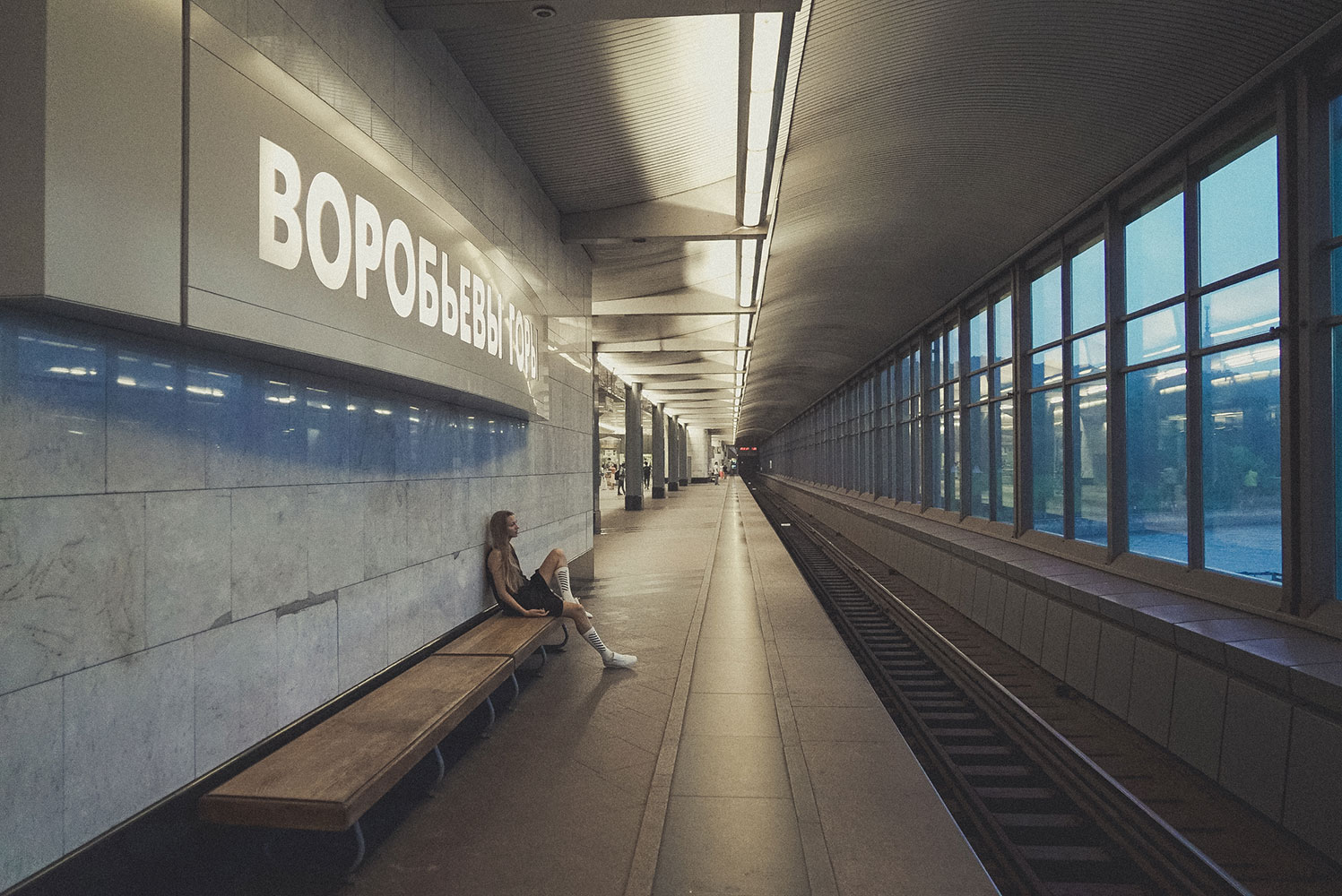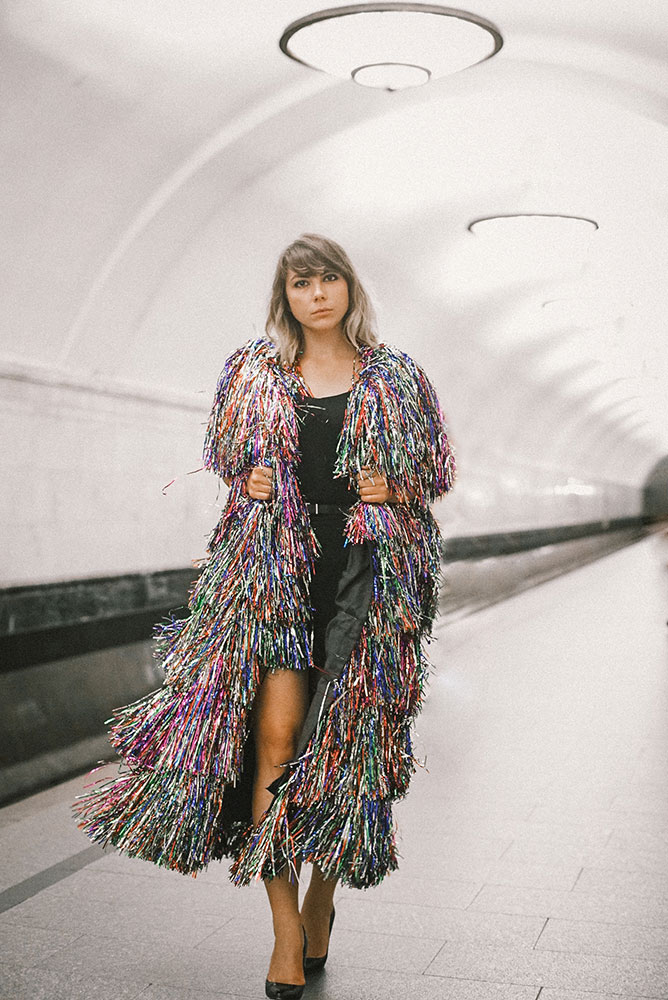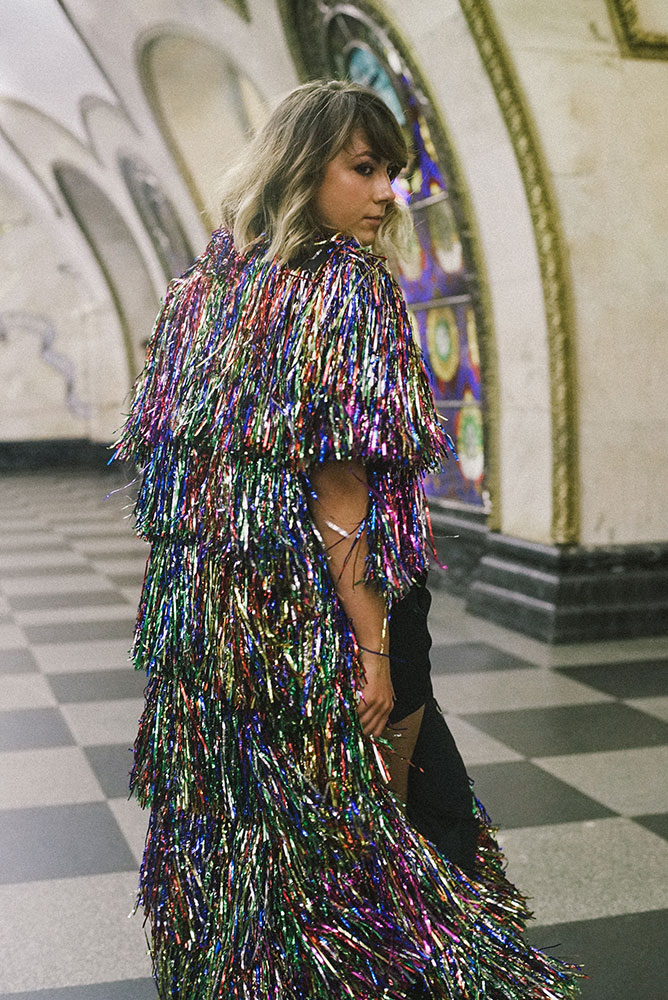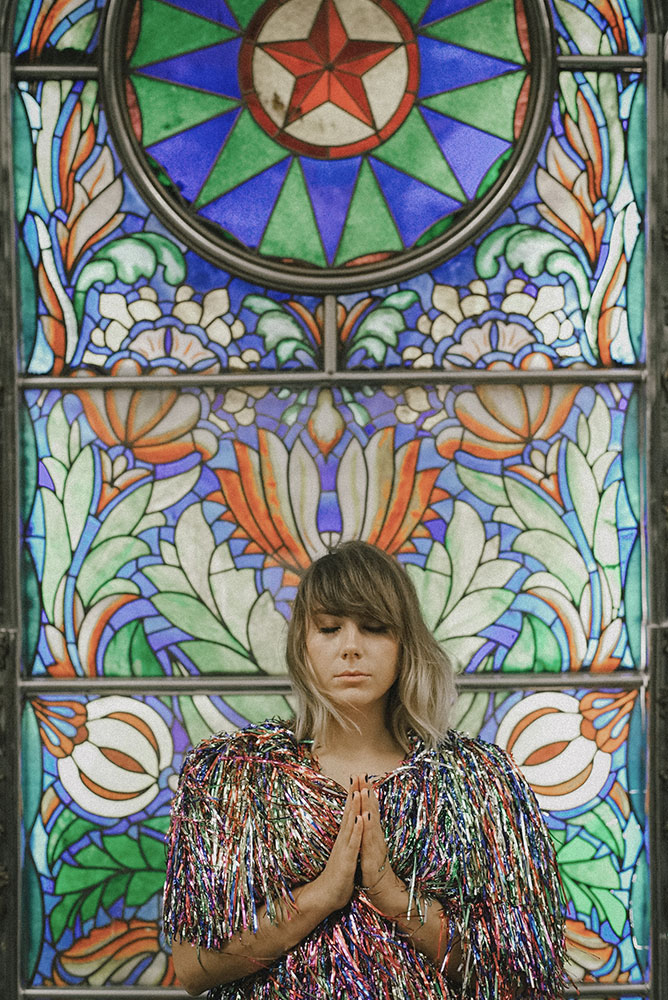Metro girls: these inspiring Moscow creatives are going places
Director and photographer Nadia Bedzhanova is interested in the lives of global youth: she’s documented the emerging generation across Europe and the US, tracing their search for love, identity and connection in a post-digital world. In the series she shot specially for The Calvert Journal, she finds inspiration close to her roots — in the stunning interiors of the Moscow Metro and in the company of the city’s emerging female creatives.
“When I used to live in Moscow I took the metro for granted, but when nostalgia hit me I felt strongly for it”
Based in New York, Bedzhanova, who is represented by 3Arts agency in Los Angeles, has built an internationally successful career, with prizes from New Filmmakers LA and Berlin Fashion Film Festival under her belt. But after six years in the US, she discovered that Russian stories were increasingly becoming more captivating for her both visually and spiritually. “When I moved to the US, everything was new, but when the euphoria was gone I found a second wave of inspiration back in Russia,” Bedzhanova remembers. The places she found enchanting were seemingly ordinary and unremarkable — courtyards and staircases — yet very familiar and touching for anyone who grew up in a Russian city. After discovering her own personal connection to these settings, she decided to work more with the topic of belonging in the hectic environment of the big city.
“Last year I did a series with my girlfriends in the hallways of their buildings, often huge post-Soviet spaces with weird interiors,” Bedzhanova remembers. “This time, together with producer Katerina Polojentseva, we decided to team up with Moscow’s emerging creative women to construct a new perspective on the place well-known to everyone by its glory and majesty: the Moscow Metro.”
With the first line opening in 1935, today the Moscow Metro has 200 stations and has a route that stretches over 200 miles. Its interiors are even more impressive than its scale: with an abundance of statues, mosaics, chandeliers and Soviet iconography in its ornamentation, metro stations are almost like underground palaces. But in all its neo-Baroque, neo-Byzantine or Stalinist glory, the metro remains an integral part of every Muscovite’s day-to-day existence.
“Millions of people move from point A to point B every day. When I was growing up, most of the people had to take the metro, because cars were still kind of a luxury, and taxis existed only in a very sketchy way,” Bedzhanova recalls. “When I used to live in Moscow I took the metro for granted, but when nostalgia hit me I felt strongly for it, I enjoyed looking at it so much. It’s unique and gorgeous, and has so much history.”
“I tried to show the strength and greatness of the female character accentuated by the architecture”
Like anyone who grew up in Moscow, Bedzhanova has her own memories attached to certain metro stations: “All my childhood I was living on the Filyovskaya line — I photographed Fili station with Lesya Paramonova — which runs outside and has separate platforms. When I went to the centre for the first time I was amazed at how diverse each station was. I was also hanging around Victory Park station a lot after it was built in 2003. For a while there were almost no people, just the lonely bench at the end of the platform where I used to make out with my high school boyfriend on cold winter evenings.”
The women Bedzhanova photographed come from a range of creative professions — publishers, editors, models, gallery owners, DJs — and are making Moscow a more fun and interesting place to be. Each of them picked their favourite station. The stations range in location and architectural style but are all united by the spark created through personal connection. The series is also a great example of the new wave of the female gaze in Russia, channeling sisterhood into the here and now.
“Depending on location, each station has its own theme, story or genre,” Bedzhanova adds. “They’re all extremely cinematic, and the interiors and monuments bring a special dimension to the character-location relationship. In this series I tried to show the strength and greatness of the female character accentuated by the architecture.”
Text: Anastasiia Fedorova
Image: Nadia Bedzhanova / Katerina Polojentseva
